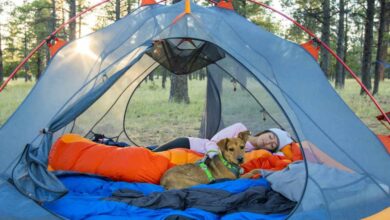What is warm-up in physical education?

Before starting any physical activity, or the practice of a sport, it is necessary to go through a general and specific warm-up phase, which works as a muscular preparation to stretch joints and activate the nervous system. In this way, the physical and emotional strength is concentrated to perform the following exercises.
The practice of any exercise or physical activity requires a preparation of the body, stretching of the muscles and even a mental activation to obtain the best performance, in addition to avoiding injuries due to demanding movements when in a previous period of inactivity.
For this reason, in this post we are going to talk about the importance of warming up, starting with its basic definition to understand the relevance of this phase, both at school and in any day-to-day physical activity.
What is heating?
In the field of both physical education and the performance of any exercise and amateur or professional sports practice, physical warm-up is conceived as a set of activities aimed at preparing the body to improve its response to more demanding exercises.
From this point of view, warming up is the preparatory phase of the muscles for a subsequent activity, whose primary objective is the prevention of injuries. In turn, it also supports activities to focus the individual’s psychological functions and attention on the next physical exercise.
When talking about the benefits of sports warm-up, we must remember that the body is in a state of rest and inactivity and it is in the preparatory phase that the muscular system begins to increase contraction, improving muscle elasticity, increasing body temperature and decreasing reaction time.
Regarding circulation, the heart rate increases as well as the blood supply to the muscles , improving their response to the fatigue that can be generated.
Also, breathing is adapted to light exercises to improve gas exchange in subsequent exercises with greater load. For its part, the nervous system is activated through dynamic coordination and rapid response to stimuli.
All this translates into a greater motivation of the students in front of the new exercises and the revision of the previous class.

Parts of the warm-up
To do the warm-up it is necessary to wear comfortable clothes such as tracksuits (check some options by clicking on this link) and tennis shoes so that the body can stretch correctly, so the training clothes or the physical education uniform must allow great flexibility to each stage of preparation.
In this sense, it is understood that the warm-up is usually divided into several phases or parts of a physical education session that, in total, must add between 10 and 30 minutes for a complete and efficient preparation.
- Activation: It is the stage of waking up the body, in which muscle warm-up games can be used without material, which make a global use of the body and range from mild to moderate intensity.
- Muscular-articular mobility: These are the exercises designed for each body segment. In this phase, the joints and muscles are prepared to prevent injuries.
- Environmental adjustment: Activities or games are carried out that are close to the conditions of the sport that is going to be practiced, so that the body adapts to changes in temperature, breathing, etc.
- Set-up: These are exercises that channel the concentration and energy of the students.
Physical education warm-ups
Although there are numerous authors who have defined different types of physical education warm-ups, understanding how fundamental this stage is at the beginning of each class, we can mention the classification made by Weineck (1994); in which general and specific heating are differentiated.
- General: It is done with exercises that act on the main muscle groups. This warm-up is designed to prepare you for any physical activity.
- Specific: It is the one where the exercises are performed based on the main physical activity. In other words, the muscles involved in the sport to be performed are warmed up and stretched.
Principles of heating
As teachers, it is convenient for physical education teachers to maintain a methodology in the application of the warm-up to increase the motivation of the students. In this regard, the following guidelines are recommended for an efficient warm-up session.
- Variation should be maintained at home class, performing exercises to avoid monotony.
- Progression is the principle that tells us to start from the general and then go to the specific, start with easy exercises and gradually increase the intensity.
- Avoid passive stretching, prioritizing aerobic exercises, as well as muscle elasticity and joint mobility.
- It is very important that in this phase the student is not fatigued, since the objective is a preparation without generating fatigue.
- Implement, whenever possible, games or playful tasks to keep the motivation and participation of the students high.

warm-up games for kids
In primary education, recreational and corporate warm-up games should be used to encourage children to work as a team. One of them can be the Collective Form, in which the class is divided into groups of 6 to 8 children and each team must make the shape of the letter, number or figure that the teacher indicates, lying on the floor, using their body. as the only resource.
Another fun way to warm up is with a game called Stop, in which students spread out around the gym area or the court and have to catch a teammate. The flirting boy has to touch someone to switch roles. If a student sees that he will be tagged, she can say the word “Stop” and remain motionless on the spot with her legs apart. The idea is that another student avoids being caught when he passes through the legs of the immobile partner. A variation of this game is that the student who shouts stop stands on four supports, so that the other classmates jump on him.
In some games, materials such as hoops, chalk to mark lines on the ground, balls or balloons are needed, depending on the activity to be carried out. The idea is that each class starts with a different game in which children can run, stretch their muscles, prepare motor coordination and, in turn, feel encouraged to participate in physical education class because it is fun for them.



